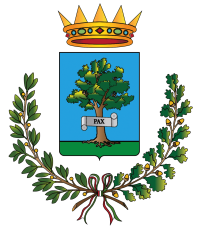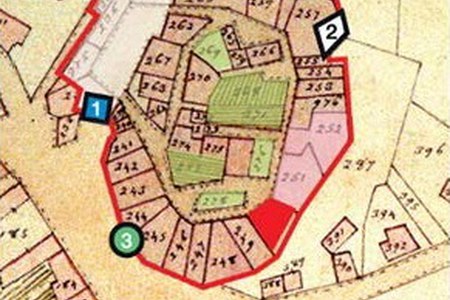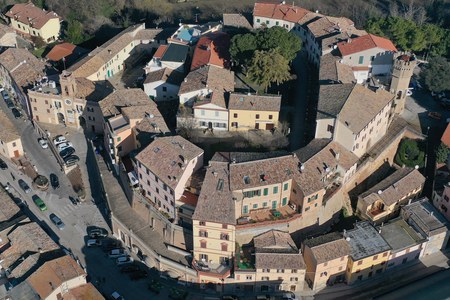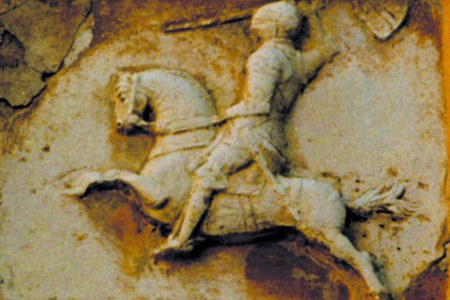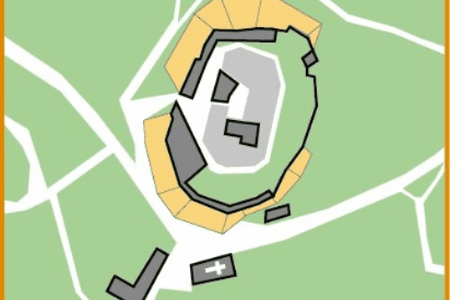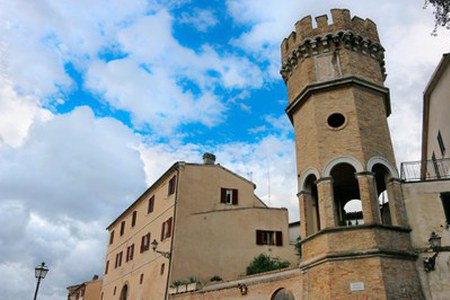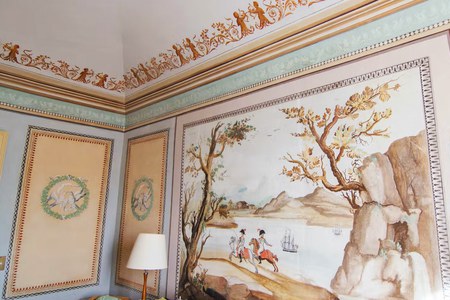The Castle and Roccolo District
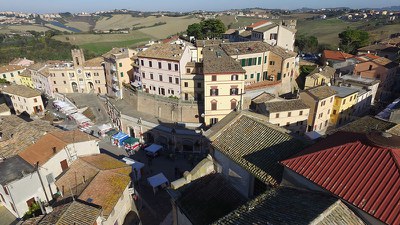 The oldest document in the history of the Castle in Polverigi dates back to 1198, when it was named in the anti-imperial federation pact between Ancona and Osimo. The walls, built during the 12th century, encircled the entire medieval village, and were erected with two main purposes: a defensive one, to shelter from outside assaults, and a protective one, to safeguard the tuff hill from weather erosion. Therefore it was a fortified village used as shelter and protection for inhabitants. Initially the walls opened into a single gate on the western slope, flanked by St. Anthony's small church. Toward the end of the 14th century, the use of gunpowder and the advent of firearms made the earlier defensive arrangements practically useless, so that the walls were soon transformed into solid foundations for a circle of palaces built over the following centuries. Between the 14th and 15th it was erected the Town Hall, on the back of which it was created a small square, supported to the west by walls with large buttresses. The building also incorporated a civic tower, which housed the new fortified entrance gate, equipped with a drawbridge and a guardhouse. Shortly afterwards it was built the new wing, which included the Church of the Most Holy Crucifix. Since then the city wall has not been modified and has gradually lost its defensive function. This is documented by the "Crucifixion," a panel painting placed in the Church of the Blessed Sacrament and dating back to the 1400s, where it is reproduced the situation of that time.
The oldest document in the history of the Castle in Polverigi dates back to 1198, when it was named in the anti-imperial federation pact between Ancona and Osimo. The walls, built during the 12th century, encircled the entire medieval village, and were erected with two main purposes: a defensive one, to shelter from outside assaults, and a protective one, to safeguard the tuff hill from weather erosion. Therefore it was a fortified village used as shelter and protection for inhabitants. Initially the walls opened into a single gate on the western slope, flanked by St. Anthony's small church. Toward the end of the 14th century, the use of gunpowder and the advent of firearms made the earlier defensive arrangements practically useless, so that the walls were soon transformed into solid foundations for a circle of palaces built over the following centuries. Between the 14th and 15th it was erected the Town Hall, on the back of which it was created a small square, supported to the west by walls with large buttresses. The building also incorporated a civic tower, which housed the new fortified entrance gate, equipped with a drawbridge and a guardhouse. Shortly afterwards it was built the new wing, which included the Church of the Most Holy Crucifix. Since then the city wall has not been modified and has gradually lost its defensive function. This is documented by the "Crucifixion," a panel painting placed in the Church of the Blessed Sacrament and dating back to the 1400s, where it is reproduced the situation of that time.
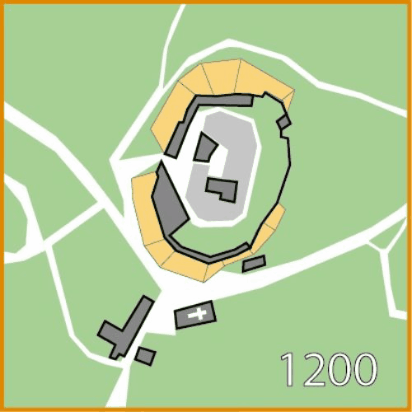
Today, where the ground becomes steeper, the still intact walls support the upper buildings and they are clearly visible starting from the aqueduct tower to the high and mighty ones above the buildings overlooking Umberto I Square, until they reach again the side of the Municipal Palace, near the ancient gateway to the castle. Few buildings remain of its old internal structure, but we know of the ancient presence of vegetable gardens and a parade ground. A peculiarity of the historic core, called "Il Roccolo," are the numerous caves, dug under almost every building, with the function of storehouses or refrigerated storage, which also served as a shelter for the population during wartime events. Once past the arch of the Municipal Building, it begins the ring road of Queen Margaret street, surrounded by a curtain of buildings constructed between 1600 and 1800 that create an oasis of peace and tranquility.
